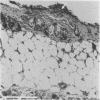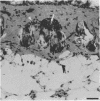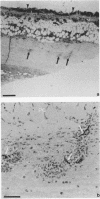Abstract
The ability of Candida albicans to infect thermally injured mice was studied. Female mice were either left unburned or given a 20% total body surface area 2-s or 7-s scald burn. The wound or skin surface was then inoculated with a human burn wound isolate of C. albicans. At 4 h postburn, approximately 10(2) to 10(3) CFU/g of tissue could be recovered from the skin of burned and unburned animals. Unburned mice cleared the organisms from the skin by 72 h, whereas in 7-s-burned animals, the candida increased in numbers to approximately 10(7) CFU/g of tissue. The ability of the organisms to invade systemically after wound surface inoculation was examined in mice given either a 2-s or a 7-s scald burn. Each injury was histologically confirmed as a full-thickness (third degree) burn, with slightly deeper tissue damage observed with the 7-s burn. At each time period examined (1, 4, 7, and 10 days), there were significantly fewer organisms in the wounds of mice given the 2-s injury than in wounds of mice burned for 7 s (P less than 0.05). In 3 of 33 mice given a 7-s injury, organisms were recovered from the kidneys at the time of sacrifice, whereas no evidence of invasion into the kidneys was noted in mice given a 2-s thermal injury. This study demonstrated that thermal injury enhances the ability of C. albicans to infect mice and that the depth of burn appears to be an important factor in determining whether the organisms can invade the burn wound to cause systemic infection. This animal model should be valuable in elucidating the virulence factors of C. albicans that play a role in the pathogenesis of candidiasis after thermal injury.
Full text
PDF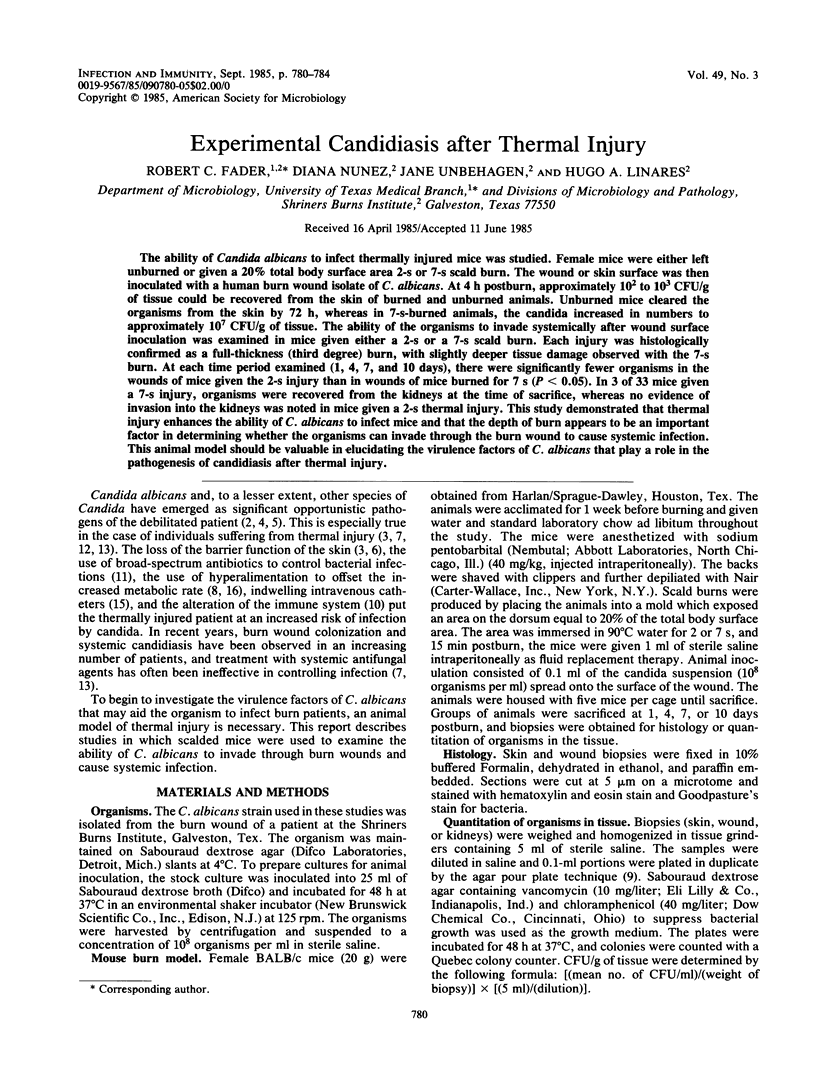
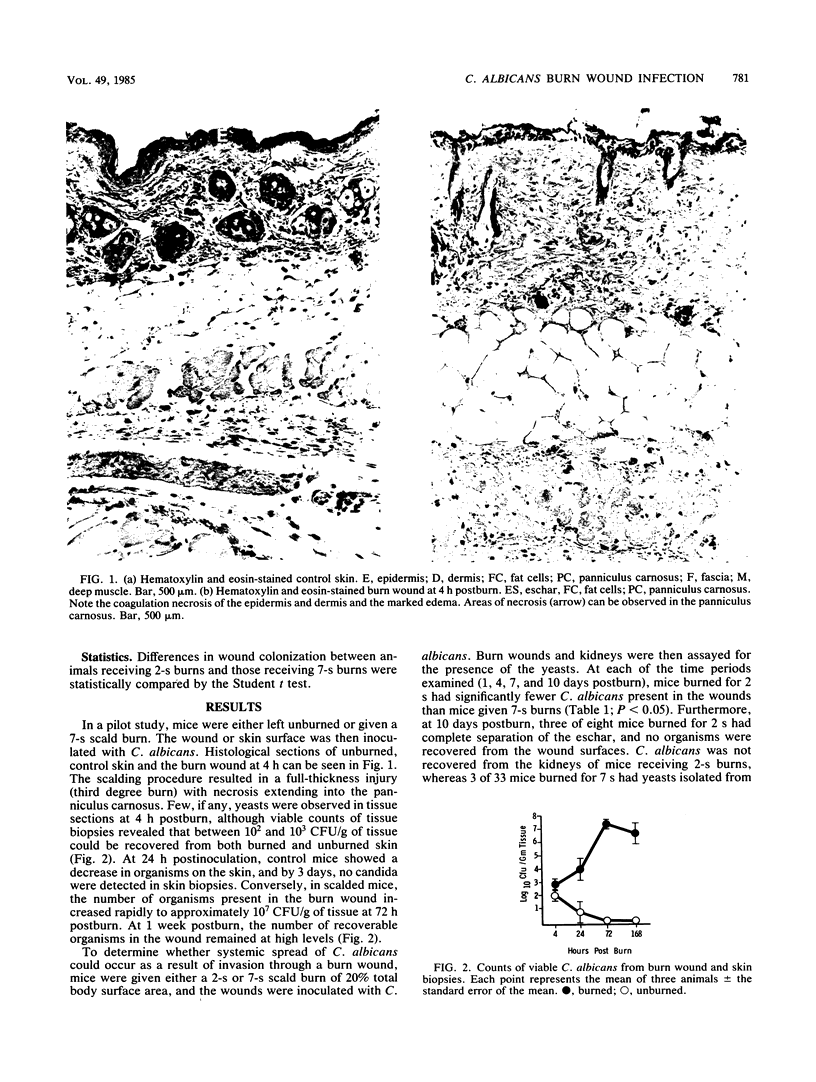
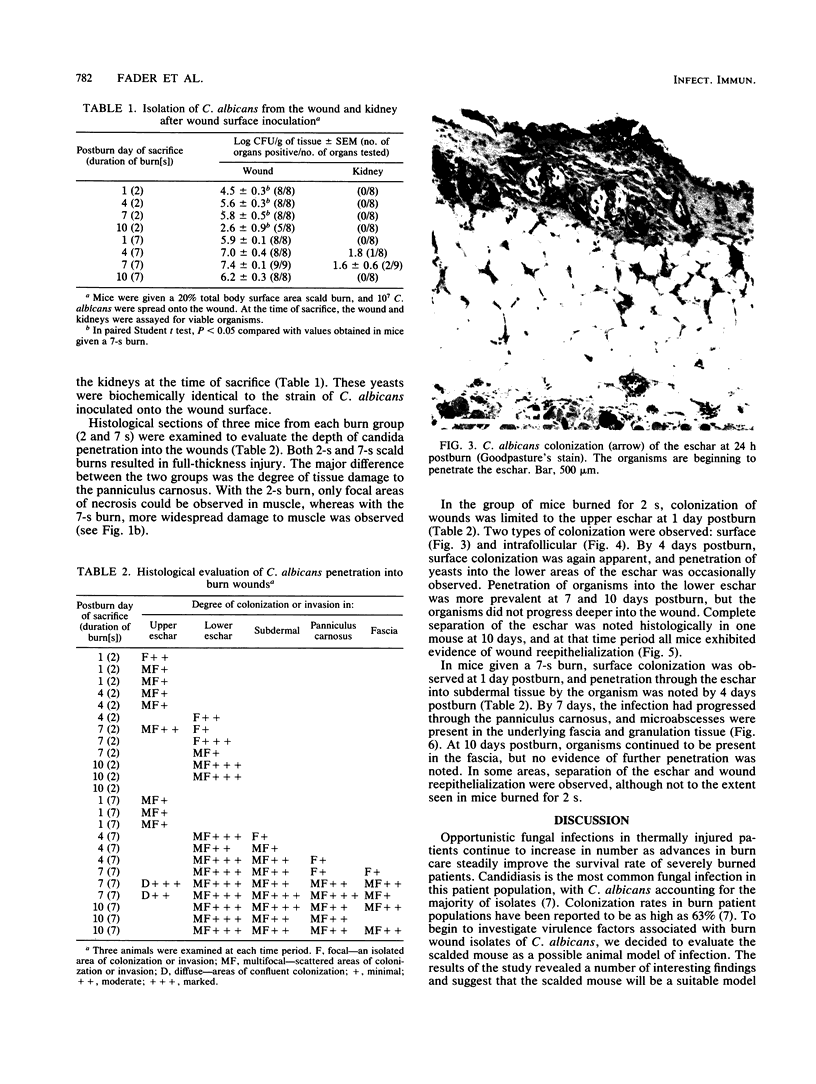
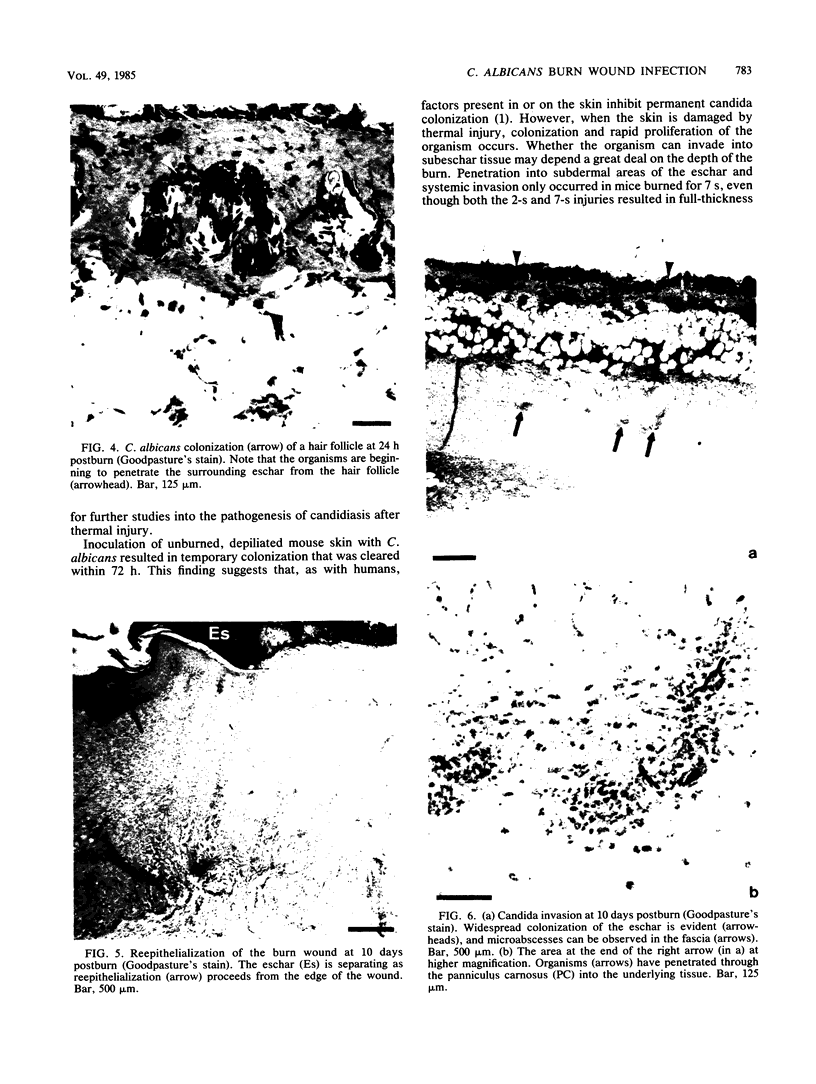
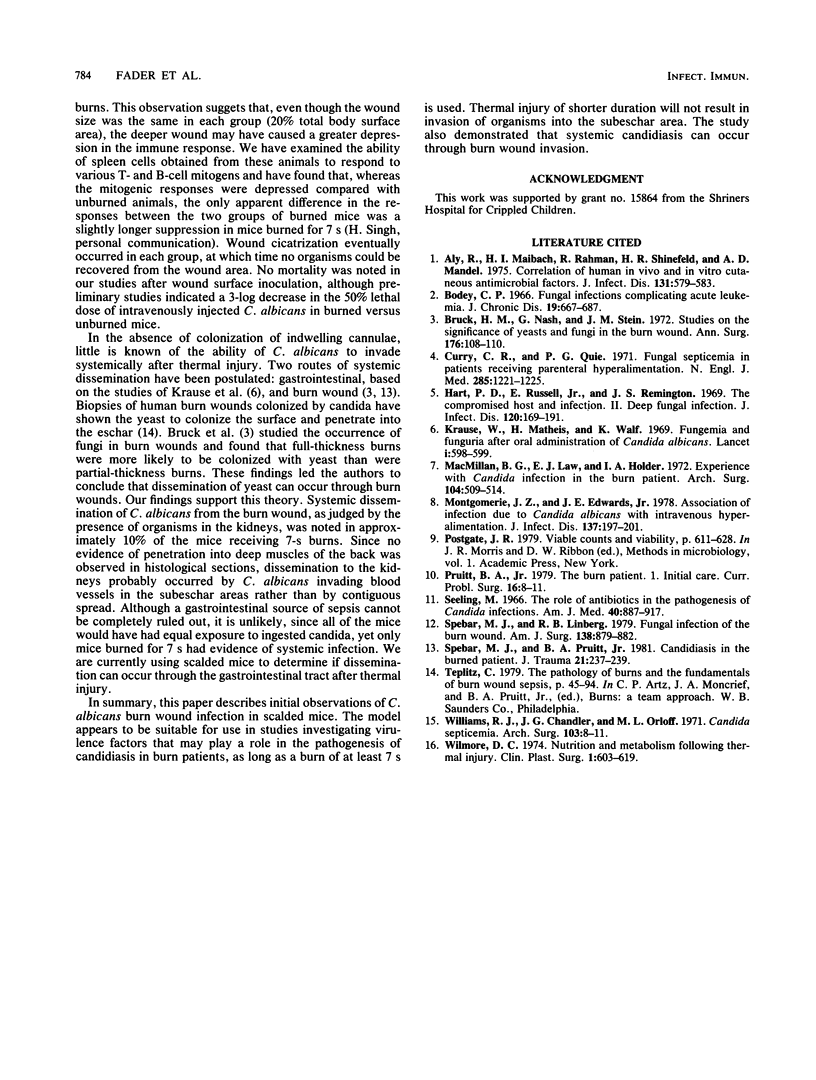
Images in this article
Selected References
These references are in PubMed. This may not be the complete list of references from this article.
- Aly R., Maibach H. I., Rahman R., Shinefield H. R., Mandel A. D. Correlation of human in vivo and in vitro cutaneous antimicrobial factors. J Infect Dis. 1975 May;131(5):579–583. doi: 10.1093/infdis/131.5.579. [DOI] [PubMed] [Google Scholar]
- Bodey G. P. Fungal infections complicating acute leukemia. J Chronic Dis. 1966 Jun;19(6):667–687. doi: 10.1016/0021-9681(66)90066-x. [DOI] [PubMed] [Google Scholar]
- Bruck H. M., Nash G., Stein J. M., Lindberg R. B. Studies on the occurrence and significance of yeasts and fungi in the burn wound. Ann Surg. 1972 Jul;176(1):108–110. doi: 10.1097/00000658-197207000-00019. [DOI] [PMC free article] [PubMed] [Google Scholar]
- Curry C. R., Quie P. G. Fungal septicemia in patients receiving parenteral hyperalimentation. N Engl J Med. 1971 Nov;285(22):1221–1225. doi: 10.1056/NEJM197111252852203. [DOI] [PubMed] [Google Scholar]
- Hart P. D., Russell E., Jr, Remington J. S. The compromised host and infection. II. Deep fungal infection. J Infect Dis. 1969 Aug;120(2):169–191. doi: 10.1093/infdis/120.2.169. [DOI] [PubMed] [Google Scholar]
- Krause W., Matheis H., Wulf K. Fungaemia and funguria after oral administration of Candida albicans. Lancet. 1969 Mar 22;1(7595):598–599. doi: 10.1016/s0140-6736(69)91534-7. [DOI] [PubMed] [Google Scholar]
- MacMillan B. G., Law E. J., Holder I. A. Experience with Candida infections in the burn patient. Arch Surg. 1972 Apr;104(4):509–514. doi: 10.1001/archsurg.1972.04180040123021. [DOI] [PubMed] [Google Scholar]
- Montgomerie J. Z., Edwards J. E., Jr Association of infection due to Candida albicans with intravenous hyperalimentation. J Infect Dis. 1978 Feb;137(2):197–201. doi: 10.1093/infdis/137.2.197. [DOI] [PubMed] [Google Scholar]
- Seelig M. S. The role of antibiotics in the pathogenesis of Candidainfections. Am J Med. 1966 Jun;40(6):887–917. doi: 10.1016/0002-9343(66)90204-x. [DOI] [PubMed] [Google Scholar]
- Spebar M. J., Lindberg R. B. Fungal infection of the burn wound. Am J Surg. 1979 Dec;138(6):879–882. doi: 10.1016/0002-9610(79)90315-5. [DOI] [PubMed] [Google Scholar]
- Spebar M. J., Pruitt B. A., Jr Candidiasis in the burned patient. J Trauma. 1981 Mar;21(3):237–239. doi: 10.1097/00005373-198103000-00007. [DOI] [PubMed] [Google Scholar]
- Williams R. J., Chandler J. G., Orloff M. J. Candida septicemia. Arch Surg. 1971 Jul;103(1):8–11. doi: 10.1001/archsurg.1971.01350070034006. [DOI] [PubMed] [Google Scholar]
- Wilmore D. W. Nutrition and metabolism following thermal injury. Clin Plast Surg. 1974 Oct;1(4):603–619. [PubMed] [Google Scholar]




